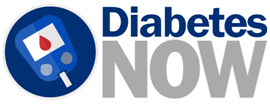Premier - Local Endocrinologist
-
Blood Glucose Meter
A glucose meter, also referred to as a “glucometer”, is a medical device for determining the approximate concentration of glucose in the blood. It can also be a strip of glucose paper dipped into a substance and measured to the glucose chart
-
Loading the player...
What is a Blood Glucose Meter? <p><a href="https://www.healthchoicesfirst.com/practitioner-type/pharmacist">Pharmacist,</a> discusses blood glucose meters.</p>Pharmacist, discusses blood glucose meters.
-
Loading the player...
What Blood Glucose Meters Are Available? <p><a href="https://www.healthchoicesfirst.com/practitioner-type/pharmacist"> Diabetes Educator</a>, discusses what glucose monitors are available.</p>Diabetes Educator, discusses what glucose monitors are available.
-
What is a Blood Glucose Meter?
Regards to which blood glucose meter you decide on and you and your healthcare provider decide on, all of the components are very similar across the board. They all consist of a blood glucose meter. They all have different types of displays of course. Many of them have memory. Many of them also have a cord that you can apply and you can relay the information into your computer.
For this particular one it has a test strip, which is very easy to use, and you actually just insert it from the bottom in this case. And when you put it in it actually turns on by itself, and once it sort of recognizes the test strip, it will display a blood droplet and that indicates that it’s prepared and ready to accept your sample.
When we’re ready to do the testing what we want to make sure is that the patient does have clean hands, because any sort of residue on the hands can affect the actual outcome of the sample. So we want to make sure that they wash their hands with warm soap and water and dry it very well before they proceed.
Once we take your lancet device we just take off the simple little top, and then we grab one of these little lancets, we insert it, and then we just take off the top, exposing the needle. Once that’s ready to go we can put the cover back on and cock the mechanism so that it’s ready to get your blood sample.
Now that’s prepared what we would want to do is have your finger making sure that it is washed and clean. The best place to do it is on the side of the finger. We try to avoid the middle because that’s where you have the most pain and perceptions, so we try to do it on the side of the finger.
So when you’re ready you just put a little bit of pressure with the sampling device onto your finger. Press the button and you get your blood sample. You don’t want to squeeze your finger too much, because that can affect the reading.
But if you have trouble getting your blood droplet out, you can gently massage your finger until the blood droplet comes out. You can take your meter that is ready to accept the sample, bring the test strip up to the blood droplet on your finger and then the test strip will absorb or draw in that blood sample. And after about five seconds or so, depending on the meter type that you have, you’ll get your blood glucose reading.
If you have any further questions about how to use your blood glucose monitor, please ask your pharmacist for any further questions. If you have more information that you need about your diabetes, you can always ask your doctor or your diabetes educator. Often seeing a Endocrinologist or local family physician in conjunction with a registered dietitian and athletic therapist is a great option to take control of this condition. Smart Food Now and exercise is also optominal for overall health.










